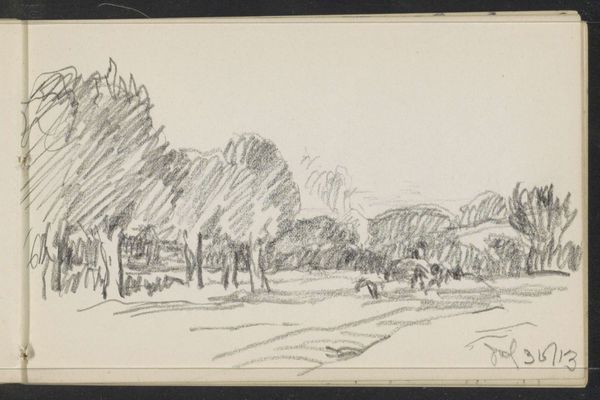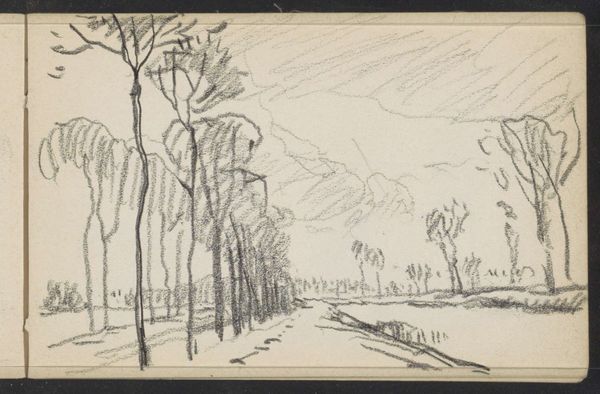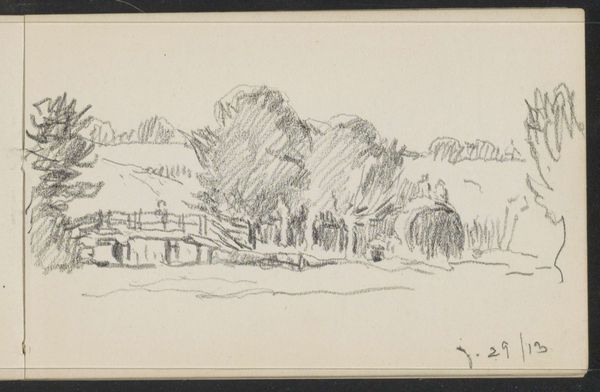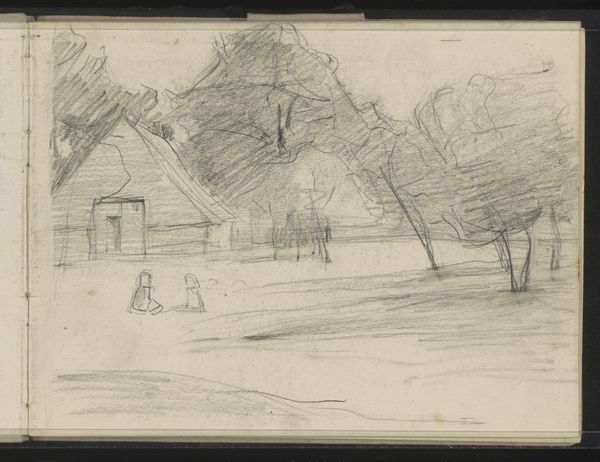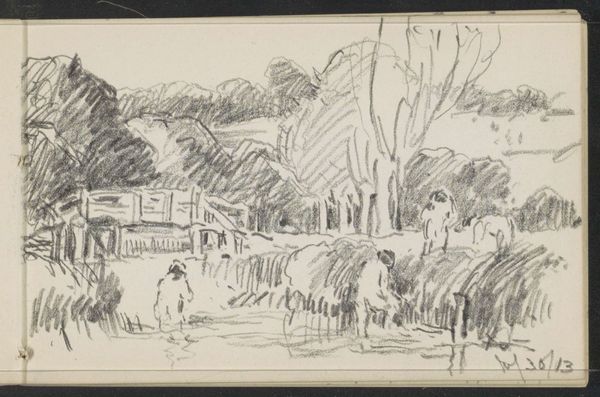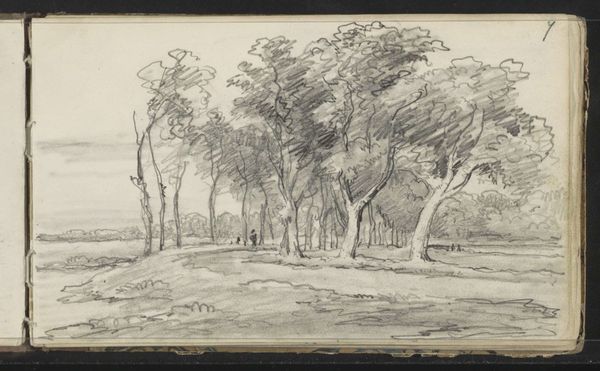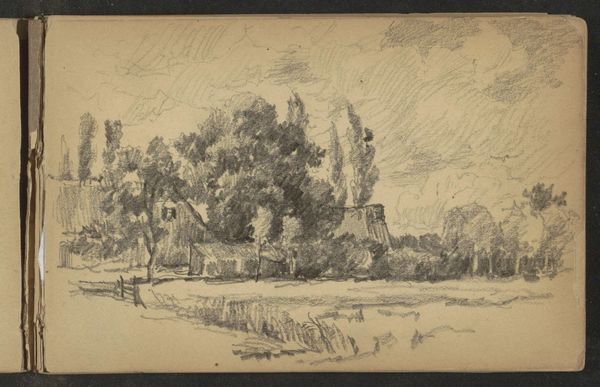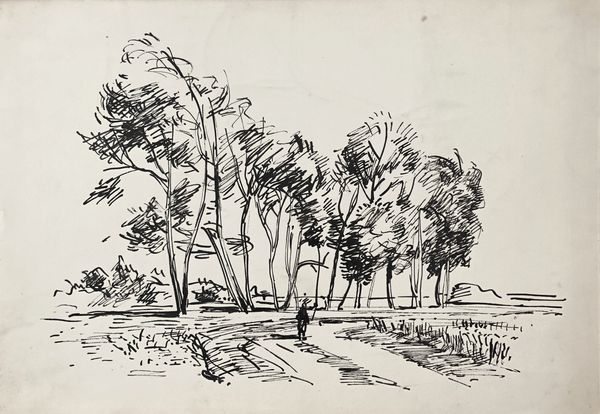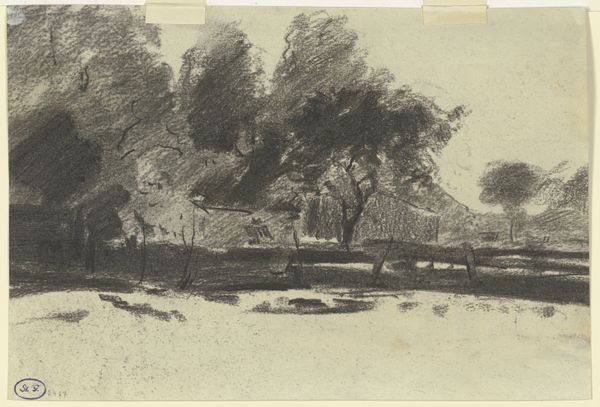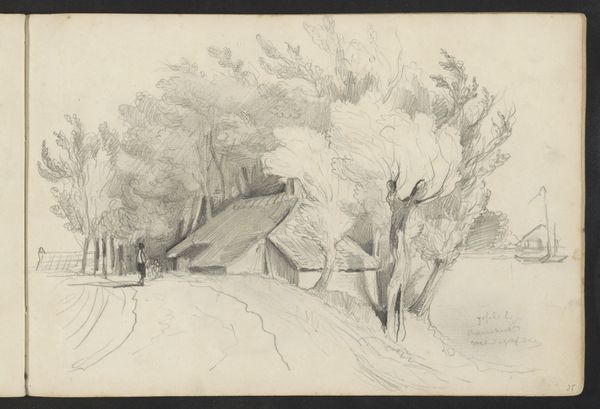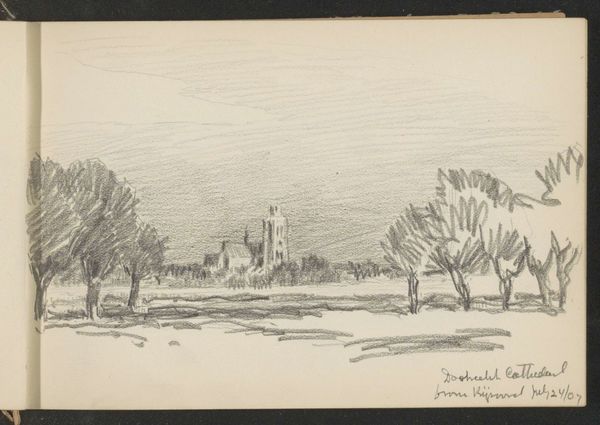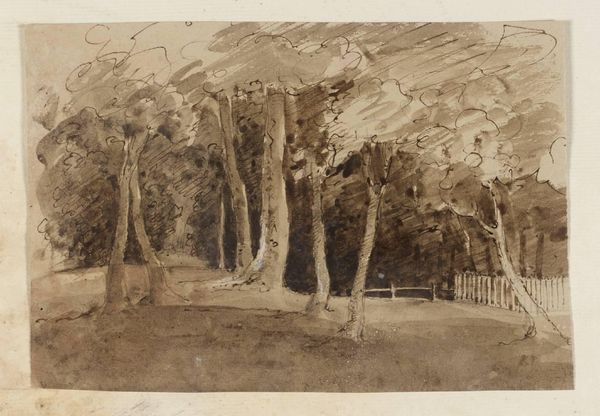
drawing, paper, graphite
#
drawing
#
impressionism
#
sketch book
#
landscape
#
paper
#
sketch
#
graphite
Copyright: Rijks Museum: Open Domain
Curator: I'm struck by the immediacy of this sketch. The rapidly applied graphite lends a sense of transience to the scene. Editor: Indeed, this work is titled "Bomenlaan langs een boerderij", or "A tree-lined avenue along a farm" in English, and it's dated between 1888 and 1889. The artist, Alexander Shilling, captures a seemingly commonplace scene, yet there is great attention to materials here. Curator: Commonplace perhaps, but note how the structural arrangement emphasizes depth. The receding lane of trees draws the eye, punctuated by that solitary figure, so vulnerable amidst nature. The textures he creates with the graphite suggest atmospheric perspective, doesn't it? Editor: What fascinates me is understanding the physical making of this piece. Shilling utilizes simple graphite on paper to depict rural life in a burgeoning industrial society, doesn't he? We are, in effect, encountering the tension between pastoral idyll and social transformation. And that humble material echoes a certain accessibility. Curator: Yes, the medium perfectly complements the mood, this interplay of light and shadow creating a melancholy, contemplative atmosphere. Look at the texture he coaxes from such simple tools – each stroke building dimension and volume, truly a subtle orchestration of value. Editor: His sketches function, in effect, as a type of labor. Shilling's artistic practice reflects his immediate surroundings. Think about where he likely stood and how that vantage informed what he sought to produce, even quickly. He provides visual accounts, or maybe even commentary, through readily available materials, making it deeply democratic. Curator: A democratic perspective for a quick study. Ultimately, it is his sophisticated manipulation of form, though, that elevates this from mere observation to art, capturing both a moment in time and something timeless about our relationship to the landscape. Editor: Well said! Thinking about his immediate environment shifts this artwork, for me, into thinking more broadly about access to materials for workers and artists and considering class consciousness.
Comments
No comments
Be the first to comment and join the conversation on the ultimate creative platform.
